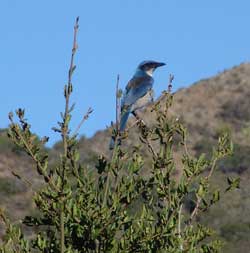Nearly everyone knows about the
Galapagos Islands -- the islands that inspired Darwin to develop his ideas about natural selection (not exactly true, but not exactly false), natural laboratory of evolution, popular tourist destination.
But not everyone knows that the US has its own Galapagos Islands, the California Channel Islands.
The Channel Islands are a group of eight islands located in the Southern California Bight (the indentation of the coast between Point Conception and San Diego). The islands range from about 12 to 60 miles off the coast. The four Northern Channel Islands are Santa Cruz, Santa Rosa, San Miguel, and Anacapa. The remaining four are considered the Southern Channel Islands: Santa Barbara, Santa Catalina, San Nicolas, and San Clemente.
Five of the islands are owned by the federal government as the
Channel Islands National Park (part of Santa Cruz, Santa Rosa, San Miguel, Anacapa, and Santa Barbara).
The Nature Conservancy owns the remainder of Santa Cruz Island.
San Nicolas and
San Clemente are owned by the US Navy, who use them for training. Santa Catalina Island (usually just called "Catalina") is the only island that is privately owned -- mostly by the
Catalina Island Conservancy. This island is my home.
 |
Anacapa Island as seen from Santa Cruz Island
Photo by Lori Nelson |
Through this blog, I hope to introduce readers to the Channel Islands -- their natural history, their human history, and what the future might hold for them.
Some posts will talk about individual islands or groups of islands, other posts will describe the biology and ecology of particular species or groups of species. I'll talk about how the islands are similar to the Galapagos, but important ways in which they differ from that more famous archipelago. The people who lived on the islands were an interesting and daring bunch of people -- I'll have posts about them too!
I hope you have a good time -- I know I will!




